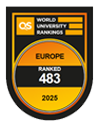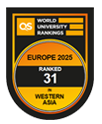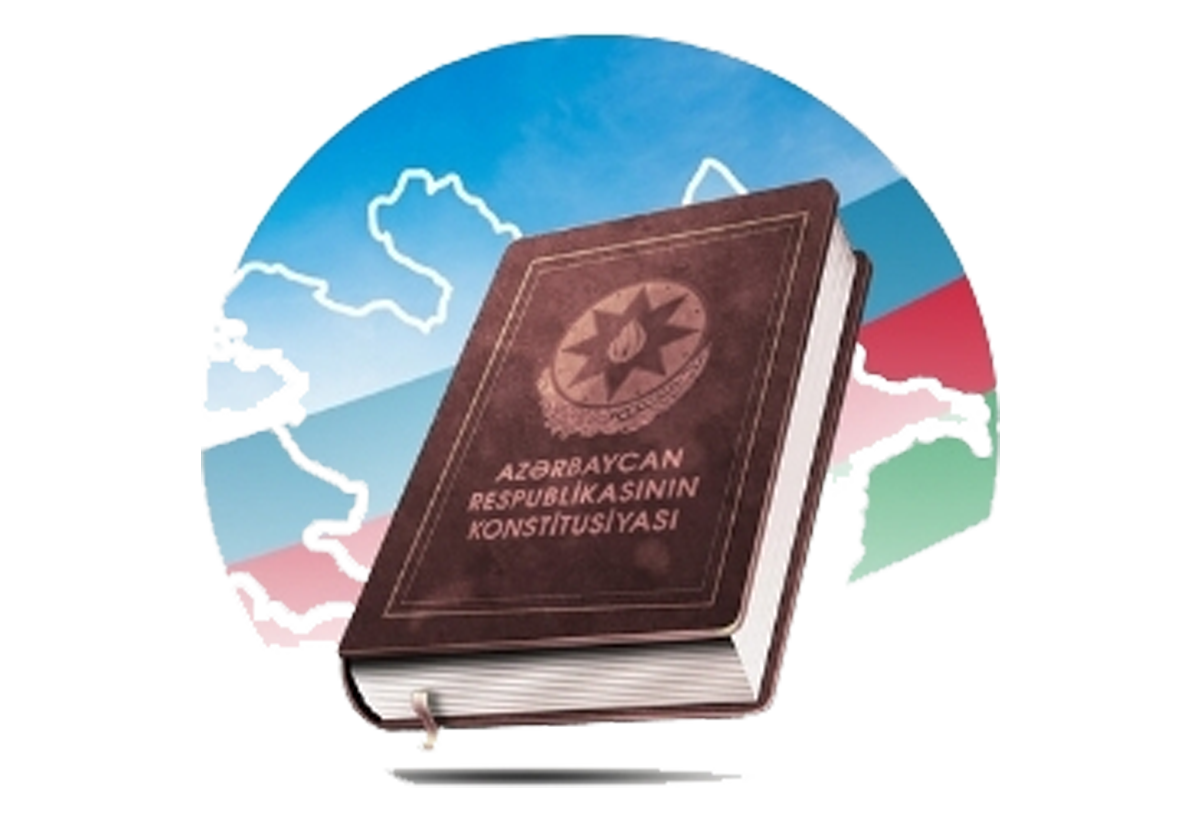Azerbaijan truths in Armenian sources
From the author:
These translation materials have been prepared on the basis of thought coming from the test of the centuries and consideration about the Azerbaijan Turks and studying Azerbaijan of the science and cultural figures of Armenian. These scientific and publicist considerations were known all over the world, have formed in the flow of historical realities. But sometimes, these considerations haven’t been met univocal: Somebody is affirmed them, but somebody showed preconceived, guileful attitude to this. It’s true that, the language of Azerbaijan-Turks and its cultural-spiritual heritable is more ancient than the Armenian language, and it’s impossible to compare these facts. The strength of Azerbaijan spiritual culture, objective and logical consideration, articles, confesses have been collected in this material. Today addressing to them is the most important matter for modern situation and explained some misunderstandings.
The confessions of the Armenians, unable to withstand the historical truths at different times once again unveil who they are:
If today Armenians have something in the field of literature, all it was obtained thanks to being neighbors to Turkic peoples, in particular, to the Azerbaijani Turks. In the present case the field of poetry is no exception. Gukasyan, Armenian author, as well as academician M. Abegyan’s such idea confirms that in the early Middle Ages Armenian poetry the rhymed verse came under the influence of Azerbaijan and other Turkic languages. These ideas can be applied to the sphere of art. Thus, the Armenian-born academic Marr has written about achievement of Armenians specific development culturally under the influence of other nations: "Ani’s Armenian art developed highly not during Armenian kings but after the collapse of the Armenian state."
Mapp. N.Y. On results of creativity of Rustaveli and his poem .Tbilisi, 1964, pp. 102
“Koroglu - (This is that Koroglu, composing many songs of ashigs at the present moment)
Gizir oglu Mustafa bey with thousand persons (he is Koroglu’s friend, whose name is memorized in his songs)
Another Mustafa bey
Qaragash, Deli Nesib, Yola Sigmaz, Tanrı Tanımaz, Göyebaxan Çıplaq, Kosa-kosa, Qırlı, Qara Saad, Ağacan Piri.
All they were Calali....”
Arakel Tebrisli – historian of XVII century
According to antiquity imagination the true home of the Armenians, which they deem is the Great Armenia is located outside Russia, more precisely in Asia Minor. As for the Armenians living in Nagorno-Garabagh, a part of them were natives, descendants of ancient Albans who protected the Christian religion. A part is refugees from Iran and Turkey that to escape persecution and attacks found a shelter in the territory of Azerbaijan.
B.Ishkhanian. "Caucasian peoples" Petrograd. Year 1916, p18
Dashnak representatives gathered around self many voluntary groups used to cut and kill mercilessly the Turkish women, children, elderly and disabled at war territories.
Lalayan. Carnage of 1918-20th years. "Revolutionary East" Magazine, № 2-3, 1936. Moscow
As the situation calmed I saw again Shusha. Nothing except rocks and stones left in Turk settlements. All houses were burnt and its owners were killed. The same case was in Khankendi’s Turk settlement ... In Baku with the help of the British the Armenians captured a big oil city and killed 25 thousand of the Turk population of the city. Ohanes Apresian’s memories. Leonard Ramsden Hartvill "People is such. 1918-22-years Azerbaijan events in one Armenian’s memories.
"The United States, Indianapolis, "Bobbs Meril Company" Publishing House, 1928.
"The Armenian Dashnak government agents are trying to unite Garabagh to Armenia. This means deprival of the population of Nagorno-Garabagh from life supplies, and to be linked with Erivan, nothing attached to. The fifth congress of the Armenian peasants they decided to recognize and join it. "
Anastas Mikoyan. 22.05.1919 - the letter written to Lenin
One of the reasons for the conflict between the Turkish and the Armenians is merciless cruelty of the Armenian nationalists against the humanism, care, patriotism of Azerbaijani peoples.
Armenian-American writer L. Z. Surmalian. From "Ladies and gentlemen, I am addressing to you" book
At the beginning of the XX century Armenian writer V. Papazian informed about the development of the Armenians, wrote: "The Armenian people is completely ignorant, uneducated, wild, and importantly unreasonable. The people were mostly involved in attacking and robbery ... as northern hunters they lived just with hunting. "
Stepan Shaumian. Selected works. Vol. 1, pp. 390.
Armenian scientist S. Zaverian confirmed that when Azerbaijanis exposed to slaughter in 1905 in Shusha 12 villages of Turks, in Javanshir region 15, in Jabrail 5, in Zangezur 43, total 75 Muslims Turkish village were burnt and razed to ground.
S. Zavarian. Economic conditions of Garabagh and famine of 1905-1907. Translated from Armenian, St. Petersburg (SPB), 1907, p. 61.
At least the Armenians must understand that for hostile relations to Muslims, at least they had to demonstrate tolerance to Georgians. But instead they burn this bridge, too. "
Richard Havannisian. The EBB and Flaw of the Armenian Minority in the Arab Middle East. -Middle East Journal, vol28, no. 1, Winter, 1974, p. 109-110.
One of the heads of the Armenian dashnaks A.Amiryan wrote that "only in Yerevan province 200 Azerbaijani villages were destroyed by dashnaks"
"Baku worker", 28.05.1918.
Lalayan, Armenian historian wrote that "the essence of the internal policy of the Government of counterrevolutionary dashnak is to instigate the national hate among the country"s nations and to destroy physically the Azerbaijani population in the territory of Armenia"
Historical Correspondences. M., 1938, p. 79-107.
Karakasian, historian interested in history of the Armenians wrote that "there is no information about the history of the Armenians that can be considered as history of annals"
Karakasyan. History of Eastern issue. London, 1905.
Armenian scientist Abegian Manouk further developed this idea and came to misty conclusion about history of Armenians: "What is the origin of the Armenian people, and how and when, wherefrom and in what ways they came to these places, with what tribes they contacted before and after being Armenians, who influenced their language and ethnic structure? We have no any reliable and accurate evidences confirming these issues."
Manouk Abegyan. History of the Armenian literature. Yerevan. 1975, p11.
It should be noted that among the Armenian family names the words of Armenian origin is few. The specialist in this area Avestisian , the Armenian scholar, confirms it. He writes: "Only 26.3% of the Armenian last names derived from the original Armenian names, and from rest names 194 were taken Persian, rest 113 from Turkish, 111 from Arab, 60 from Greek, 54 from Jewish, 44 from other languages "
Avetisian T.M. Armenian surnames. (In Armenian), Yerevan, 1987, p112-114.
Musa Khoreni wrote that «as now, in the past, the ancient hays had no interest in science, folklore songs. Therefore, to speed about feeble-minded, ignorant and wild people is useless."
History of the Armenia. Moisey Khonesky, M., 1893, pp. 4
As confessed the Armenian scientist Hovannesian "in ancient times, except for a short time the lands from Cilicia to Caucasus never belonged to Armenians"
Richard G. Hovannissian. The Republic of Armenia. Los An-s, vol. 2, p. 332.
In the book "The history of the Armenian people" it is noted that "The fact that Tigran, Artashes, Artavazdın and others were Armenians was note proved by anybody with anything."
History of the Armenian people. p 80.
Non-existance of Armenian state in the Western Azerbaijan historically was confessed by the famous Armenian scholar B. Iskhanian. He wrote that "the Armenians spread in different parts of the territory of the Caucasus just during the last centuries."
Iskhanyan B. Peoples of the Caucasus (Statistics economical studies), Petrograd, 1916, p.16
After Artas the power passed to his son Artavaz. Ancient author Yuliy Kapitoli names him as Artabast. This name is of the ancient Turkish origin and means "arda" – happy, playful, fast runner, quick and “bash’ means “leader”.
Sevortyan E.V. The ethimological dictionary of Turkic words. V 1, M., 1974, pp. 172-173.
"The Armenians, with their hypocritical behavior sometimes invited armed groups either of one or another side and kept themselves closer to Parthians for position of lands, their nature similarity and mixed with them with marriages. The freedom is strange to them and rather they inclined to be slave."
Tacit Korneliy. Works, V 2, SPB., 1887, pp. 395-396.
Khalifa Abdul Malik abolished the Albanian Church and subjected Christian Albanians to Armenian Church and Catholicos. Since this period, the systematic process of destruction of the ancient Albanian culture by the Armenian Church started. This is confirmed by the Armenian author Ter-Grigorian. He wrote that, "Musa Kaqanvatsi’s (Albanian historian) work received by us not as it was. It has been translated by Armenian priests and deliberately many distortions were made in text under the instruction of Armenian catholicos."
Ter-Qriqoryan Struggle of Artsaq with Arab conquerors in IX. B., 1942, pp. 42.
Well-known German scientist, Adam Mets wrote that "the Armenians are the worst slaves among the white servants but fine body, ugly feet, they have no honor, good thieves, their character, their language is rough. If you leave slave Armenian workless even for an hour, then his nature will drive him towards bad deeds. Under the baton and fear he works well. If you see his laziness, it is not because of fatigue but only from bringing him a pleasure. That time you should take baton, strike him and to force him to work."
Adam Mec. Moslem Renaissance. M., 1973, pp. 144.
Towards the end of the XIX century the bloody events perpetrated by Armenians in Turkey for which Armenians were guilty and this fact indirectly recognized by the Armenian historians themselves. Chalkhusian wrote that "When news on so-called "Armenian genocide in Turkey came Velichko said that" the Armenians deserve it !...".
Chalkhusyan. Armenian case and Armenian pogroms in Russia. Rostov on Don, 1905, pp. 25.
When "Dasnaksyutun" party was established it had no program. Because it choose not the ideological struggle, the struggle with political means, but violence, terrorism, revolts, conspiracy as a main tool. This idea was once more confirmed by Armenian author M.Vartanyan by reference to other author. He wrote that basing on works of Karl Marx "A group of gang is more effective than a program of groups” and for three years this program was not touched.
Vartanyan M., Dasnaksyutun (in Armenian), pp. 80, 85
Well-known Armenian historian A. Lalayan wrote that "the Dashnaksyutun had deceived the Armenian people over 40 years and the interests of the Armenian counterrevolutionary bourgeoisie were sought”. Lalayan A.A. Dashnakstyutun parties ol tl ’control vontrrevolyucionnay the rol. - "Istoriceskie zapiski",
As noted by the Armenian authors Turabian and Papazyan had described the features as following:
- No matter each Armenian will sell some of the basic needs.
- At announcement of the mobilization they will accept it and they will prevent mobilization
- Regardless of speed the Armenian soldiers will join any gangs voluntarily.
- As Russian troop passed the border the deserter will attack Ottomans together with them
- They will cut off of lines and public features will fail.
- At place in back front when they see all Moslems by age of 2 and will kill all of them
(although during the events it was proved that kids of 2 years- old , even in womb, the killing of kids were frequents case
The supply routes and telegraph lines will be cut off for Ottoman army
They will capture food of Muslim people, property seized and will be burnt.
-They will have propaganda as if the home, fields, grains, are left and will blame Moslems leave the house, agricultural products, such as churches and charitable organizations were Muslims burned as if it will work.
- They will instigate the official state bodies and kill Ottoman officers in ambush
- They will kill Ottoman soldiers returned injured.
- They will revolts, rebellions in towns, settlements, villages, etc.
- they will breach the morality of Moslem soldiers and civilians and force them to live country.
- They will export and import the bombs and weapons and will arm all Armenians.
- They will blame Muslims for any the rebellion, revolution, and genocide and will publish it local and foreign public opinion.
- They will do espionage for union states favor and will do directive works "
K.S. Papazian a. g. e., p37-38., Aram Turabian. Les les Drapaux Fraocais Volontaires Armeniens sauce, Marseilles 1917, p6. Georges de Maleville, age, P. 34-35.
Majority of the Armenians living in Garabagh that were earlier Christian Albanians and grigorianized later, were treated by the nationalist circles as second class people. Armenian author R. Arakelov also noted it. He wrote that for nationalist Armenians "Garabagh Armenians are second-class members of the tribe."
Arakelov Robert. Naqorno Garabagh. Guilty of known tragedy. B., 1991, pp. 12.
Before resettlement of Armenians from Iran and Turkey to Northern Azerbaijan the Armenians comprised insignificant minority in Yerevan. Namely after the policy of resettlement of the Armenians in 1850, they comprised more than 8 percent of the total population, 9 percent in 1879, and 10 percent in 1897. These figures were confirmed by Armenian scientists Parsamian, Pogosyan and Arutyunian.
Parsamian V.A. S.A. Poqosian, and N.R. Arutyunian. History of the Armenians. Armucpedqiz, 1962, p131,
Maurice Wagner, German traveler while being in Yerevan in 1843 described the situation in this region as catastrophic. Wagner later noted that "it is not surprising at all, in spite of religious hate, the majority of Armenians in the city wants to go back to Iran. "
Abegian Artases. Maurice Wagner, German traveler in Armenia. Vienna, in Armenian. 1857, p. 9.
This is irrefutable fact that until territory of Northern Azerbaijan annexed to the Russian Empire, Armenians did not live compactly in the present-day territory of Azerbaijan. In these areas, Armenian toponyms were so les as self Armenian ethnosis. Parsamian, Armenian scholar wrote that "until joining to Russia, from 169155 peoples of present-day Armenia 33.8 percent was Armenians and 49.7 percent Muslim (Azerbaijanis)"
Parsamian V.A. History of Armenians 1801-1900 1, Erevan, 1977, pp. 88.
Translated by Zhala Mammadova


